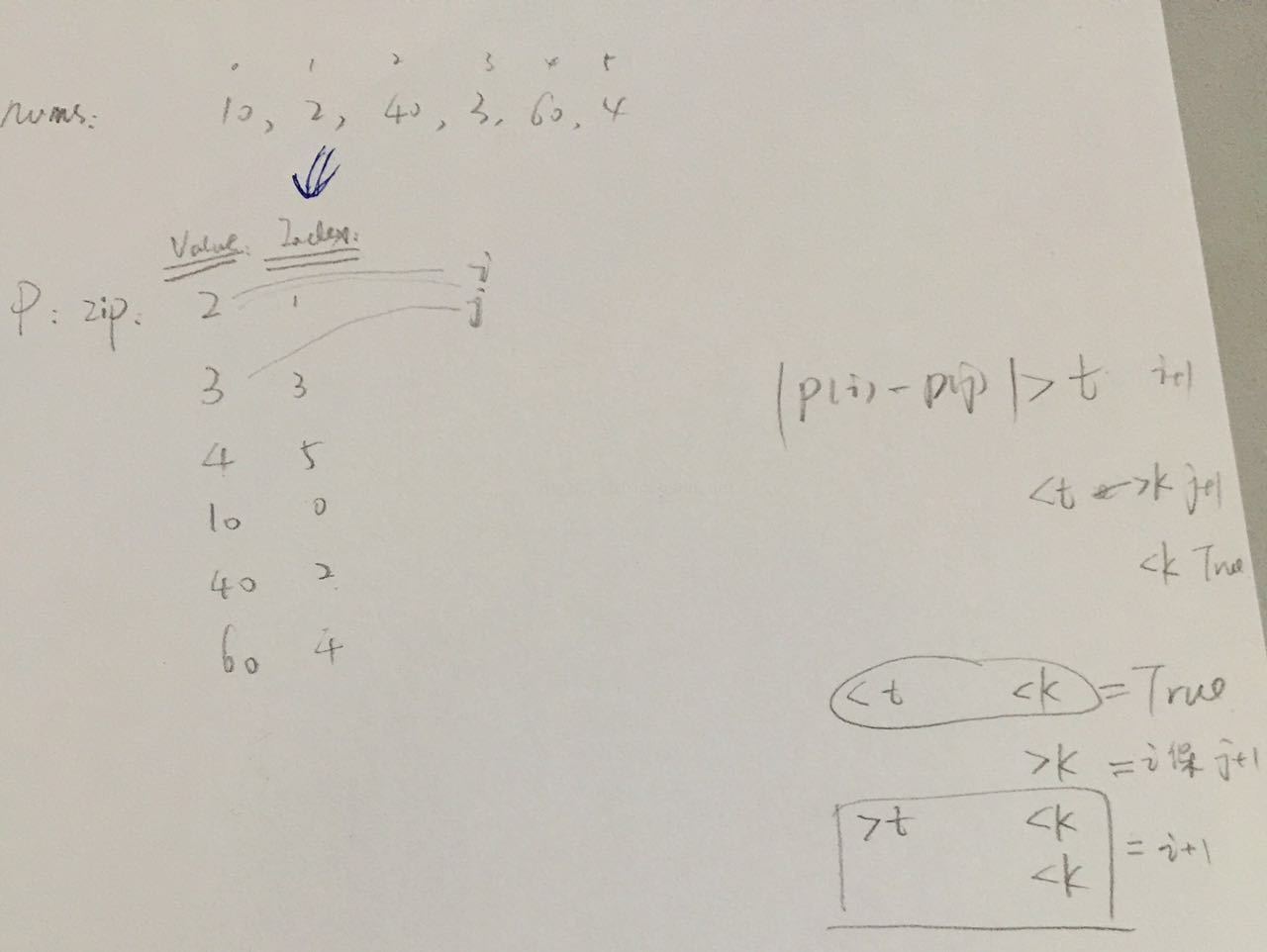Given an array of integers, find out whether there are two distinct indices i and j in the array
such that the difference between nums[i] and nums[j] is at most t and the difference between i and j is at most k.
参考:
http://bookshadow.com/weblog/2015/06/03/leetcode-contains-duplicate-iii/
用这个例子,返回值是false,应该是true呢
nums=[10,2,40,3,60,4]
k=4
t=3
如果找不到collections,记得import collections
http://stackoverflow.com/questions/15711755/converting-dict-to-ordereddict
不可不知的Python模块: collections
http://www.zlovezl.cn/articles/collections-in-python/
在Python中,dict这个数据结构由于hash的特性,是无序的,这在有的时候会给我们带来一些麻烦, 幸运的是,collections模块为我们提供了OrderedDict,当你要获得一个有序的字典对象时,用它就对了。
参考:
http://yucoding.blogspot.jp/2015/10/leetcode-question-contains-duplicate-iii.html
asking for whether two indices exists ... , we have to search the array in some way
two constrains: one is related to element values in the array, the other is related to indices. So, we have to consider the two at the same time
Since we have already sorted the array, if the value difference between P[0] and P[1] is greater than t, the value difference between P[0] and P[2], P[3] ... P[end] must also greater than t.
If current comparison is not satisfied, all the other comparisons are not even necessary. We can move P[0] to next element.
While on the other hand, if the value difference <= t, but the index difference > k, we still have to keep the current P[i] and move P[j] until meets the above scenario or the end of the array.
nums=[10,2,40,3,60,4]
zip(nums, range(len(nums)))
⬇️
[(10, 0), (2, 1), (40, 2), (3, 3), (60, 4), (4, 5)]
http://stackoverflow.com/questions/16310015/what-does-this-mean-key-lambda-x-x1
key=lambda x: x[0]
⬇️
def element_1(x):
return x[0]
sort(mylist, key=lambda x: x[0]) sorts mylist based on the value of key as applied to each element of the list
max() will return the element in that array whose second element (x[1]) is larger than all of the other elements' second elements
按x[0]排序,并返回x整体

class Solution(object):
def containsNearbyAlmostDuplicate(self, nums, k, t):
"""
:type nums: List[int]
:type k: int
:type t: int
:rtype: bool
"""
p=sorted(zip(nums,range(len(nums))),key=lambda x:x[0])
#----Time Limit Exceed---感觉和下面的while一样,为什么会超时呢?
#for i in range(len(nums)):
# for j in range(i+1,len(nums)):
# if abs(p[i][0]-p[j][0])<=t and abs(p[i][1]-p[j][1])<=k :
# return True
# elif abs(p[i][0]-p[j][0])>t:
# break
#return False
i=0
while i<len(nums):
j=i+1
while j<len(nums):
if abs(p[i][0]-p[j][0])<=t and abs(p[i][1]-p[j][1])<=k:
return True
elif abs(p[i][0]-p[j][0])>t:
break
else:
j+=1
i+=1
return False
最后
以上就是多情鸵鸟最近收集整理的关于【LEETCODE】220-Contains Duplicate III的全部内容,更多相关【LEETCODE】220-Contains内容请搜索靠谱客的其他文章。



![int *p[4]与int (*q)[4]的区别](https://file2.kaopuke.com:8081/files_image/reation/bcimg5.png)




发表评论 取消回复